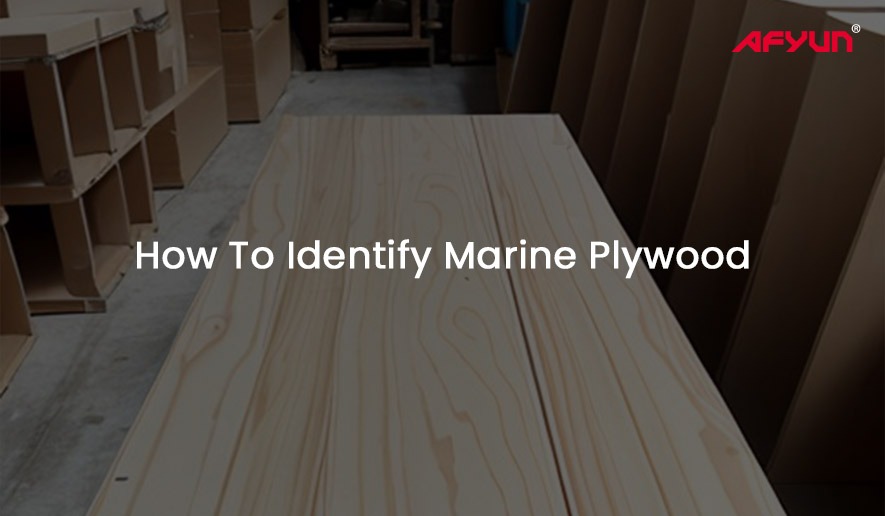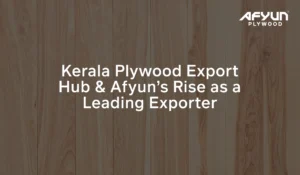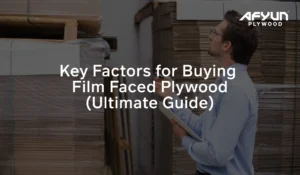Marine plywood is a versatile and durable type of plywood that is perfect to use in water-based environments. It is ideal for boat construction, docks, and other outdoor applications.
However, with various types of plywood available in the market, it can be challenging to identify marine plywood accurately.
In this article, we will discuss the key features of marine plywood. This will help you distinguish it from other types of plywood.
Features of Marine Plywood That Helps You Identify It
- Exterior Glue
One of the primary features of marine plywood is the use of exterior-grade glue in its construction. The glue of marine plywood is a special one that can withstand exposure to moisture. Also, this ensures a strong bond between the layers of the plywood.
When examining plywood, look for the “Exterior” or “Exterior Grade” label. Such labels indicate that the plywood comprises glue that can withstand outdoor and water-based conditions.
- Water Resistance
Marine plywood is well-known for its exceptional water resistance. It withstands moisture, making it suitable for applications in humid and wet environments.
The plywood uses waterproof adhesives and the manufacturers often treat it with special chemicals to enhance its water resistance. Due to this, people sometimes call it Waterproof Plywood.
Look for the term “Waterproof” or “Boiling Water Proof” (BWP) to ensure that it has the necessary water-resistant properties.
And to those who ask ‘Is Marine Plywood Waterproof?’ and ‘Can Marine Plywood Get Wet?‘, this is the answer right here.
- High-Quality Veneers
Another distinguishing feature of marine plywood is the use of high-quality veneers in its construction. Veneers are thin layers of wood that are glued together to form the plywood sheets. Manufacturers only use veneers that have high strength and durability.
They are often made from hardwood species such as mahogany, birch, or teak. These woods have a natural resistance to water and decay. The use of high-quality veneers contributes to the overall strength and longevity of marine plywood.
- Structural Integrity
Marine plywood’s superior structural integrity is popular. It is constructed with more layers or plies compared to regular plywood, providing enhanced strength and stability.
Marine plywood typically consists of a minimum of 5 to 7 layers. However, it can have even more layers depending on the thickness and intended use. The additional layers increase the plywood’s load-bearing capacity, allowing it to withstand heavy loads and harsh environmental conditions.
- Certification Standards
To ensure the authenticity and quality of marine plywood, it is essential to look for certifications and standards. Organizations, such as the American Plywood Association (APA) and the International Maritime Organization (IMO), have set specific standards for marine plywood.
Look for certifications such as the APA trademark or the “Marine Grade” certification to ensure that the plywood meets the required standards for marine applications.
Conclusion
In conclusion, identifying marine plywood requires attention to its distinctive features. The use of exterior-grade glue, water resistance, high-quality veneers, superior structural integrity, and adherence to certification standards are key characteristics of marine plywood.
By considering these features, you can accurately identify marine plywood and make an informed decision when selecting the right plywood for your water-based or outdoor projects. Also, note that the quality might vary depending on the grades of Marine Plywood.
Want to compare Marine plywood with other plywood? Check the following out!
- Marine Plywood Vs Multiwood
- Marine Plywood Vs Gurjan Plywood
- Marine Plywood Vs Laminated Plywood
- Difference Between Marine Plywood and Ordinary Plywood
To know the advantages of Marine Plywood, check out our blog section.
Also, feel free to check out the FAQs section to further learn about Marine Plywood.








